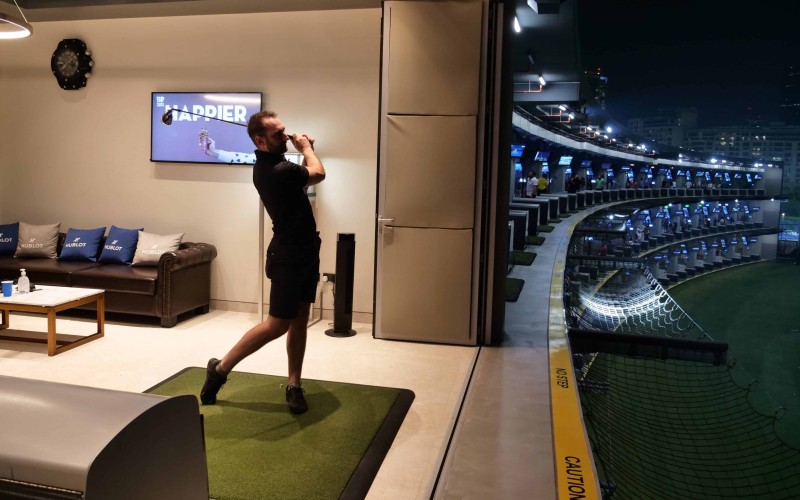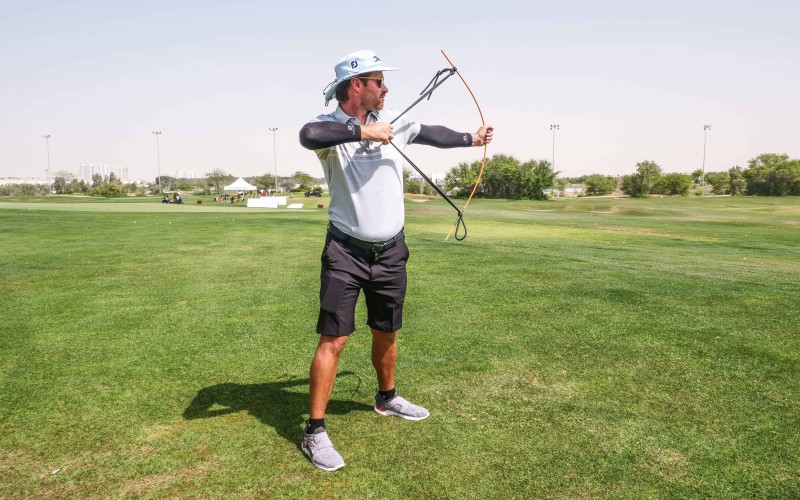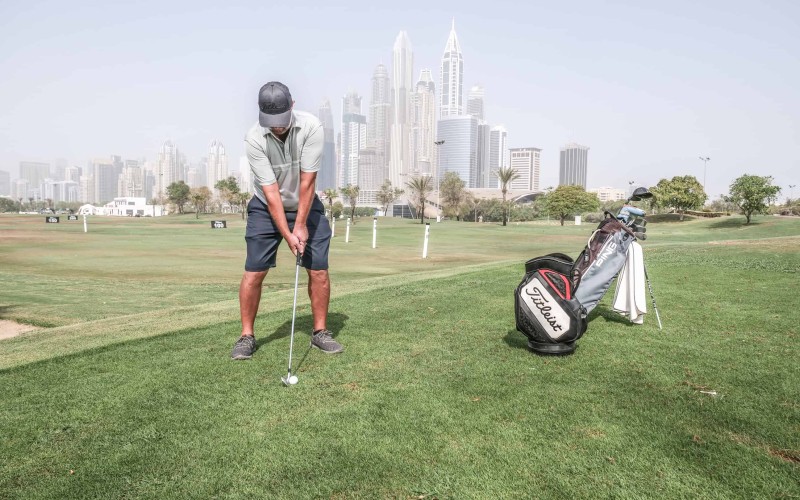Many golfers pass through the Peter Cowen Golf Academy at Jumeirah Golf Estates asking for more distance and consistency. As a coach, hip turn is often an area of concern, whether it be through a player’s lack of flexibility or understanding of how to make the correct movement.
Many golfers actually try to limit their backswing hip turn. An idea not shared with the world’s best golfers, so why do amateurs try to achieve it? The answer is that they believe pros do not move their lower body in the backswing but use maximum rotation and force through the downswing for power. An observation which is not true.
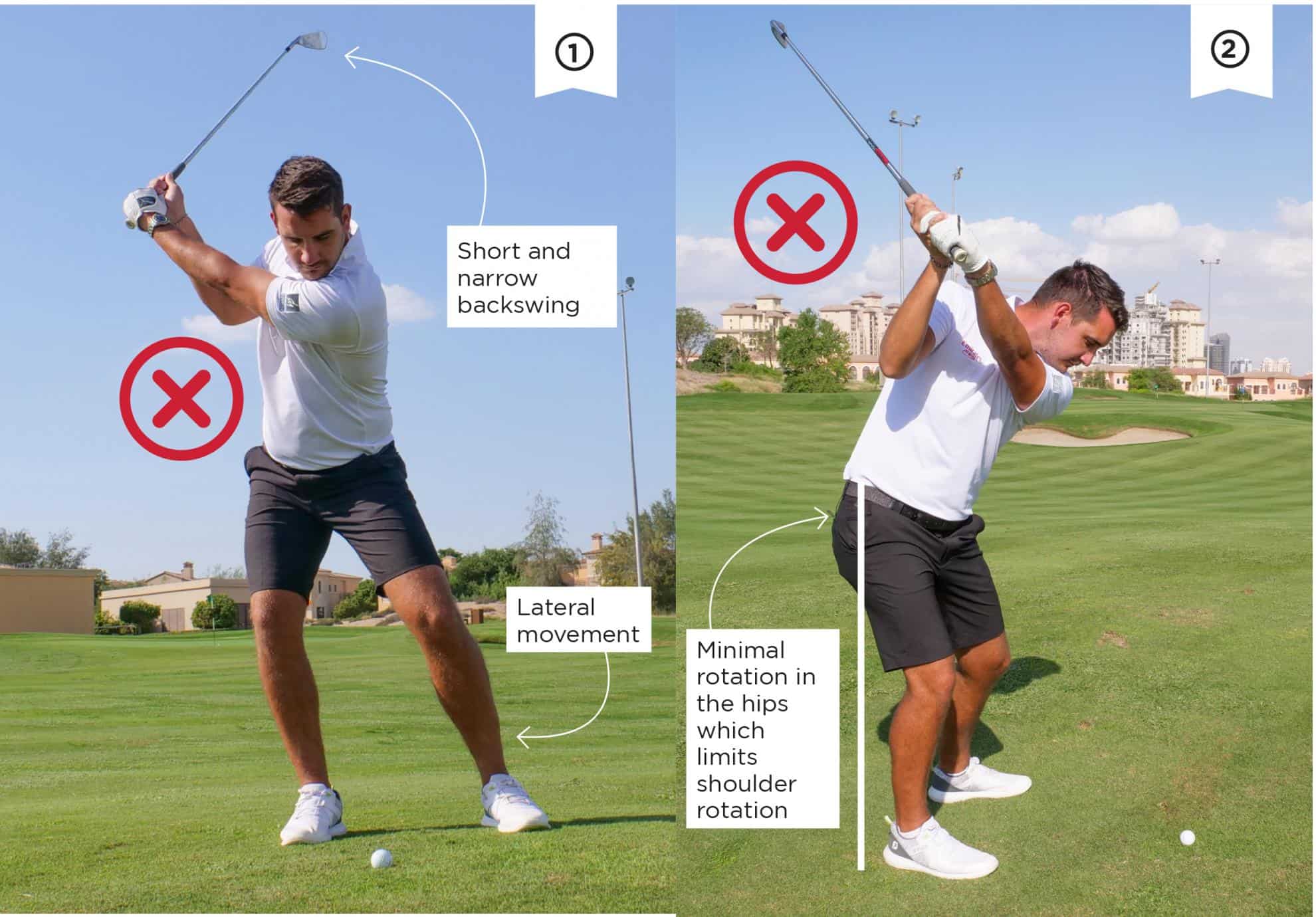
Every golfer needs to utilise the hip turn in the backswing to create a spiral effect in order to use the ground force and release downwards into the golf ball for maximum power and control.
We see too many golfers try to ‘keep the hips quiet’ but in fact it ends up as a lateral movement as demonstrated in picture 1. Once the back hip moves laterally over the back foot it causes minimal rotation, so the golfer is going to find it near impossible to transfer the weight back to the front foot and rotate for impact.
From an upper body perspective this movement will limit the shoulder rotation creating a short and narrow backswing.
This movement will not only cause inconsistent ball flights and shot shapes but also significantly lowers clubhead speed for distance.
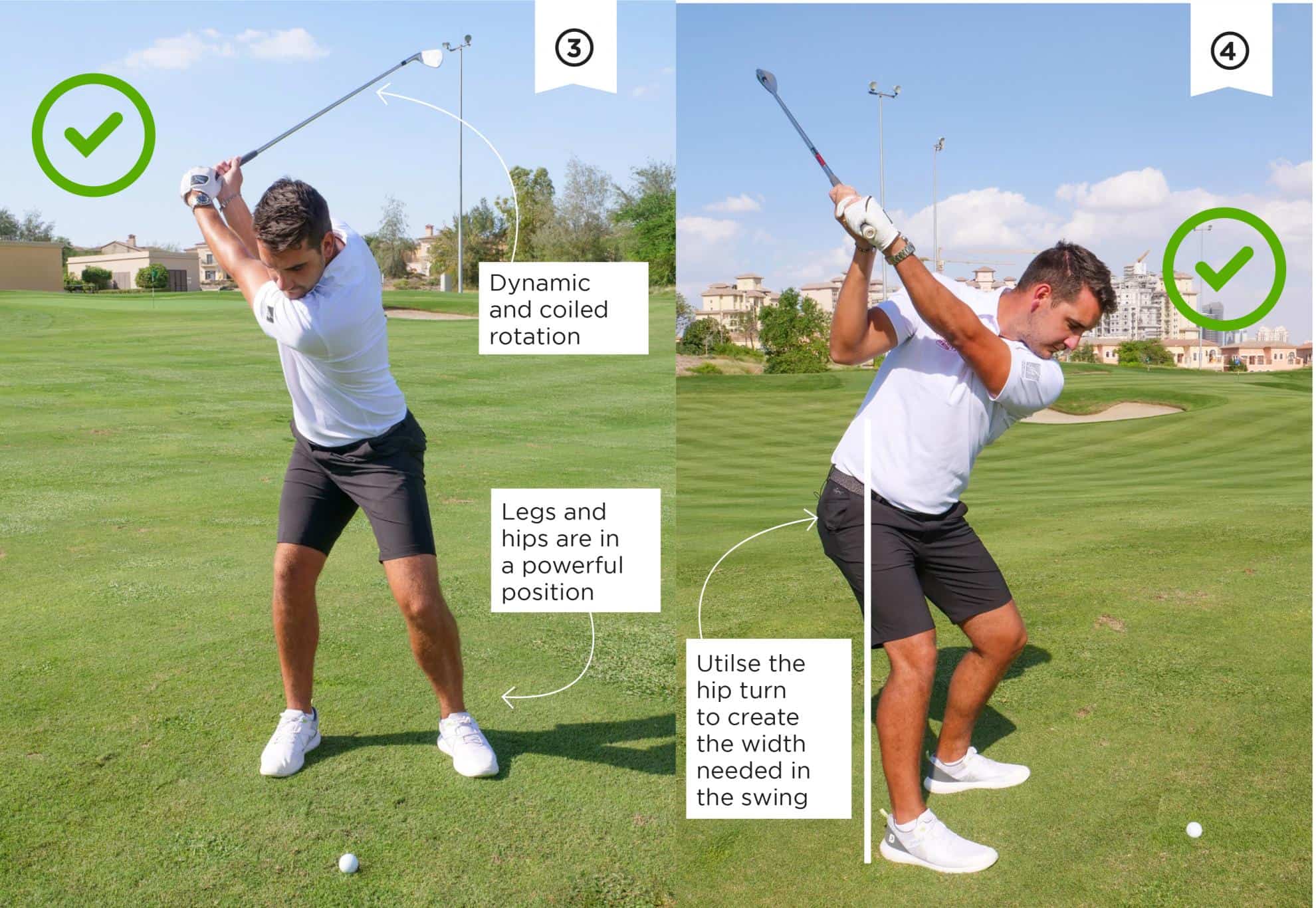
Like many coaches, I like to see a dynamic and coiled rotation from the hips in the backswing. The hip needs to feel like its rotating behind the body whilst keeping the back leg flexed and remaining in posture as the weight distribution remains evenly split. In an ideal world, the hips would rotate to 45 degrees but depending on body capabilities, this can vary from golfer to golfer.
The key is to makes sure the hips are rotating enough that the upper body can also reach a 90 degree position – relative to set up – to create the width needed to deliver a consistent, powerful and repeatable downswing, as shown in picture 3.
This is a powerful position for any golfer to be in as it helps sustain a consistent delivery to the ball through a repeatable swing path but also allows the player to use a lot more ground force, which in turn will create more speed and pressure through impact therefore providing better ball striking and more distance.
Watch the video to find out more or if you would like to have your game analysed contact [email protected]









